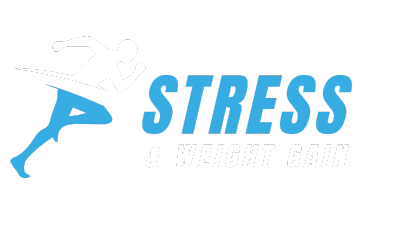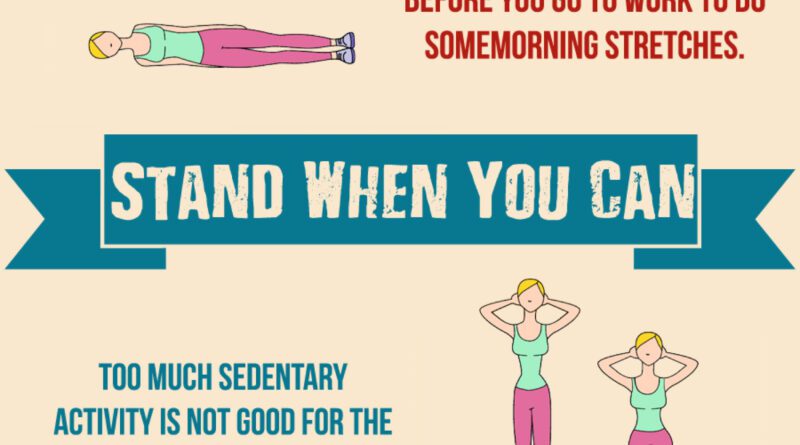Weightloss For Busy People Advice
Are you constantly on the go and struggling to find time to prioritize your health and well-being? Look no further! In this article, we will provide you with valuable weight loss advice specifically tailored for busy individuals like yourself. Discover simple yet effective tips and tricks that will seamlessly fit into your hectic schedule, enabling you to achieve your weight loss goals without compromising your daily commitments. Get ready to embark on a journey towards a healthier, fitter you, even in the midst of your busiest days!

1. Planning and Preparation
1.1 Set Realistic Goals
When embarking on a weight loss journey, it’s important to set realistic goals that are attainable and sustainable. Consider what you hope to achieve and break it down into smaller, achievable steps. Remember, slow and steady wins the race!
1.2 Create a Schedule
Busy schedules can often make it challenging to prioritize weight loss. To overcome this, creating a schedule is key. Plan designated times for exercise, meal prepping, and self-care activities. By allocating time specifically for these activities, you are more likely to follow through and make progress towards your goals.
1.3 Plan Meals in Advance
Meal planning is a game-changer when it comes to maintaining a healthy diet amidst a hectic lifestyle. Take some time each week to plan your meals in advance. This will not only save you time but will also ensure that you have nutritious options readily available. Consider preparing meals in bulk and portioning them out for the week ahead.
2. Efficient Exercise Strategies
2.1 High-Intensity Interval Training (HIIT)
For those with limited time, high-intensity interval training (HIIT) is a highly effective exercise strategy. HIIT involves short bursts of intense exercise followed by brief rest intervals. This type of workout can be completed in as little as 20 minutes and can provide the same benefits as longer, steady-state cardio workouts.
2.2 Incorporate Physical Activity into Daily Routine
Finding ways to incorporate physical activity into your everyday routine can make a significant impact on your weight loss journey. Take the stairs instead of the elevator, walk or bike to work if possible, or set aside time for a brisk walk during your lunch break. These small changes can add up and help you reach your fitness goals.
2.3 Make Use of Quick Workouts
When time is of the essence, quick workouts can be a lifesaver. Look for workouts that are designed to be completed in a short amount of time but still provide maximum results. There are numerous apps and online resources available that offer quick and effective workout routines that can easily fit into a busy schedule.

3. Healthy Eating Habits
3.1 Prioritize Nutrient-Dense Foods
A key aspect of healthy eating is prioritizing nutrient-dense foods. These are foods that are rich in vitamins, minerals, and other beneficial compounds while being relatively low in calories. Examples include fruits, vegetables, lean proteins, whole grains, and healthy fats. By focusing on these types of foods, you can fuel your body with the nutrients it needs while managing your weight.
3.2 Portion Control
portion control plays a significant role in weight loss. It’s easy to consume more calories than necessary when eating out or when faced with large portions. Be mindful of serving sizes and try using smaller plates and bowls to help control portion sizes. Listen to your body’s hunger and fullness cues, and avoid eating until you feel stuffed.
3.3 Meal Prepping
Meal prepping goes hand in hand with healthy eating when you have a busy schedule. By preparing meals in advance, you can ensure that you have nutritious options readily available and minimize the temptation to reach for less healthy choices in a hurry. Dedicate some time each week to plan and prepare your meals, and consider investing in containers to keep them organized and easy to grab on busy days.
4. Mindful Eating Practices
4.1 Slow Down and Savor Every Bite
In our fast-paced world, it can be easy to rush through meals without truly savoring the experience. By slowing down and paying attention to each bite, you can cultivate a mindful eating practice. Take the time to chew your food thoroughly, savor the flavors, and listen to your body’s signals of fullness. This allows you to enjoy your meals more fully and can help prevent overeating.
4.2 Eliminate Distractions
Eating while distracted, such as watching TV or scrolling through your phone, can lead to mindless overeating. To combat this, aim to eat without distractions. Focus on your meal, the flavors, and the sensations in your body. By being fully present during meals, you can enhance your eating experience and better tune into your body’s natural hunger and fullness cues.
4.3 Practice Eating Regularly
Establishing regular eating habits can help you maintain a steady energy level throughout the day and prevent excessive hunger that may lead to overeating. Aim to eat balanced meals and snacks at regular intervals throughout the day. This can help keep your metabolism functioning optimally and prevent intense food cravings or impulsive food choices.

5. Strategies for Maintaining Motivation
5.1 Set Short-Term Goals
While long-term goals are important, setting short-term goals can provide a sense of accomplishment and motivation along the way. Break your weight loss journey into smaller milestones and celebrate each achievement. These smaller goals can serve as stepping stones towards your ultimate objective, keeping you motivated and focused throughout the process.
5.2 Find Accountability Partners
Having someone to share your weight loss journey with can provide much-needed support and accountability. Seek out a friend, family member, or coworker who shares similar health and fitness goals. You can support each other, share tips and advice, and celebrate milestones together. Having someone to hold you accountable can make a significant difference in staying on track.
5.3 Reward Yourself
Rewarding yourself for reaching milestones is an important aspect of maintaining motivation. Treat yourself to non-food related rewards such as a massage, a new workout outfit, or a day trip to your favorite outdoor spot. Celebrating your achievements helps reinforce positive behaviors and can serve as a reminder of the progress you’ve made on your weight loss journey.
6. Managing Stress and Sleep
6.1 Prioritize Quality Sleep
Getting enough sleep is crucial for overall health and weight management. Lack of sleep can affect hormones that regulate appetite and satiety, leading to increased food cravings and overeating. Aim for 7-8 hours of quality sleep each night. Establish a bedtime routine, create a relaxing sleep environment, and limit exposure to electronic devices before bed to improve sleep quality.
6.2 Incorporate Stress-Reducing Activities
Stress can often be a trigger for emotional eating or turning to unhealthy coping mechanisms. Incorporating stress-reducing activities into your routine can help manage stress levels and prevent emotional eating. Engage in activities such as yoga, meditation, deep breathing exercises, or spending time in nature. Find what works best for you and make it a priority to incorporate stress-reducing activities into your daily life.
6.3 Practice Mindfulness or Meditation
Mindfulness and meditation can be powerful tools in managing stress and staying present in the moment. These practices can help you develop a greater awareness of your thoughts, emotions, and physical sensations. By practicing mindfulness or meditation regularly, you can cultivate a sense of calm and improve your overall well-being, making it easier to make healthy choices and stay on track with your weight loss goals.

7. Tracking Progress
7.1 Keep a Food and Activity Journal
Keeping track of what you eat and your physical activities can provide valuable insights into your weight loss journey. Consider keeping a food and activity journal to monitor your progress. Write down everything you eat and drink, as well as the duration and intensity of your workouts. This can help identify patterns, highlight areas for improvement, and hold yourself accountable.
7.2 Use Mobile Apps or Fitness Trackers
Utilizing technology can simplify the process of tracking progress. There are numerous mobile apps and fitness trackers available that can help you monitor your calorie intake, track your workouts, and provide personalized feedback. These tools can make it easier to stay on top of your goals and make adjustments as needed.
7.3 Regularly Assess and Adjust
Weight loss is not a one-size-fits-all journey, and it’s essential to regularly assess and adjust your approach. Take time to reflect on your progress, review your goals, and evaluate what is and isn’t working for you. Make adjustments to your meal plans, exercise routines, or stress management techniques based on your own experiences and feedback from your body.
8. Healthy Snack and Meal Ideas
8.1 Grab-and-Go Snacks
Busy schedules often call for convenient and portable snacks. Stock up on healthy grab-and-go options such as mixed nuts, fruit, Greek yogurt, protein bars, or pre-cut vegetables with hummus. These snacks provide a balance of nutrients and can keep you satisfied between meals without derailing your weight loss efforts.
8.2 Quick and Healthy Breakfast Options
Breakfast is an important meal when it comes to weight loss, and quick options can be a lifesaver on busy mornings. Consider overnight oats, smoothies with added protein, whole grain toast with avocado or nut butter, or Greek yogurt topped with fruit and granola. These options provide a mix of protein, fiber, and healthy fats to fuel your day.
8.3 Simple Lunch and Dinner Recipes
Preparing simple and nutritious meals doesn’t have to be time-consuming. Opt for recipes that can be prepared in a short amount of time, such as stir-fries, salads with lean protein, or sheet pan meals. These options are versatile, allowing you to customize them with your favorite ingredients while keeping your meals balanced and weight-loss friendly.

9. Strategies for Dining Out
9.1 Research Restaurant Menus in Advance
Dining out doesn’t have to derail your weight loss efforts. A little preparation can go a long way. Before heading to a restaurant, take the time to review their menu online. Look for healthier options that align with your goals, such as grilled proteins, vegetable-based options, and whole grain alternatives. Having a plan in place can help you make mindful choices when dining out.
9.2 Practice Portion Control
Restaurant portions are typically larger than what we need, making portion control essential. Consider sharing a meal with someone else, ordering an appetizer-sized portion, or asking for a to-go box at the beginning of the meal and packing up leftovers. By practicing portion control, you can enjoy dining out without sabotaging your weight loss progress.
9.3 Choose Healthier Options
When dining out, it’s important to make conscious choices that support your weight loss goals. Look for menu items that are grilled, steamed, or baked, and choose foods that are lower in fat and calories. Opt for lean proteins, vegetables, and whole grains. Avoid dishes that are fried, creamy, or heavily sauced. By making healthier choices, you can enjoy eating out while still making progress towards your goals.
10. Seek Professional Guidance
10.1 Consult with a Registered Dietitian
If you’re feeling overwhelmed or struggling to make progress on your own, it may be beneficial to consult with a registered dietitian. These professionals are trained to provide personalized guidance tailored to your specific needs and goals. They can help you create a customized meal plan, address any nutritional deficiencies, and provide ongoing support throughout your weight loss journey.
10.2 Work with a Personal Trainer
Working with a personal trainer can take the guesswork out of your fitness routine and help you optimize your workouts. They can design a program that meets your individual needs, ensures proper form, and challenges you appropriately. A personal trainer can provide motivation, accountability, and expert guidance to help you reach your weight loss and fitness goals efficiently.
10.3 Join a Weight Loss Program
For those who prefer a structured approach, joining a weight loss program can provide valuable resources and support. These programs offer guidance on nutrition, exercise, behavior modification, and often include a supportive community. Research different programs to find one that aligns with your values and goals, and that provides the level of support and accountability you need.
In conclusion, weight loss for busy people is possible with careful planning and prioritization. By setting realistic goals, creating a schedule, and planning meals in advance, you can set yourself up for success. Incorporating efficient exercise strategies, practicing healthy eating habits, and implementing mindful eating practices will further support your weight loss journey. Strategies such as setting short-term goals, finding accountability partners, and rewarding yourself can help maintain motivation. Managing stress, tracking progress, and seeking professional guidance can also contribute to long-term success. With dedication and consistency, you can achieve your weight loss goals while navigating a busy lifestyle. Remember, small changes and consistent efforts add up over time, leading to sustainable results.

